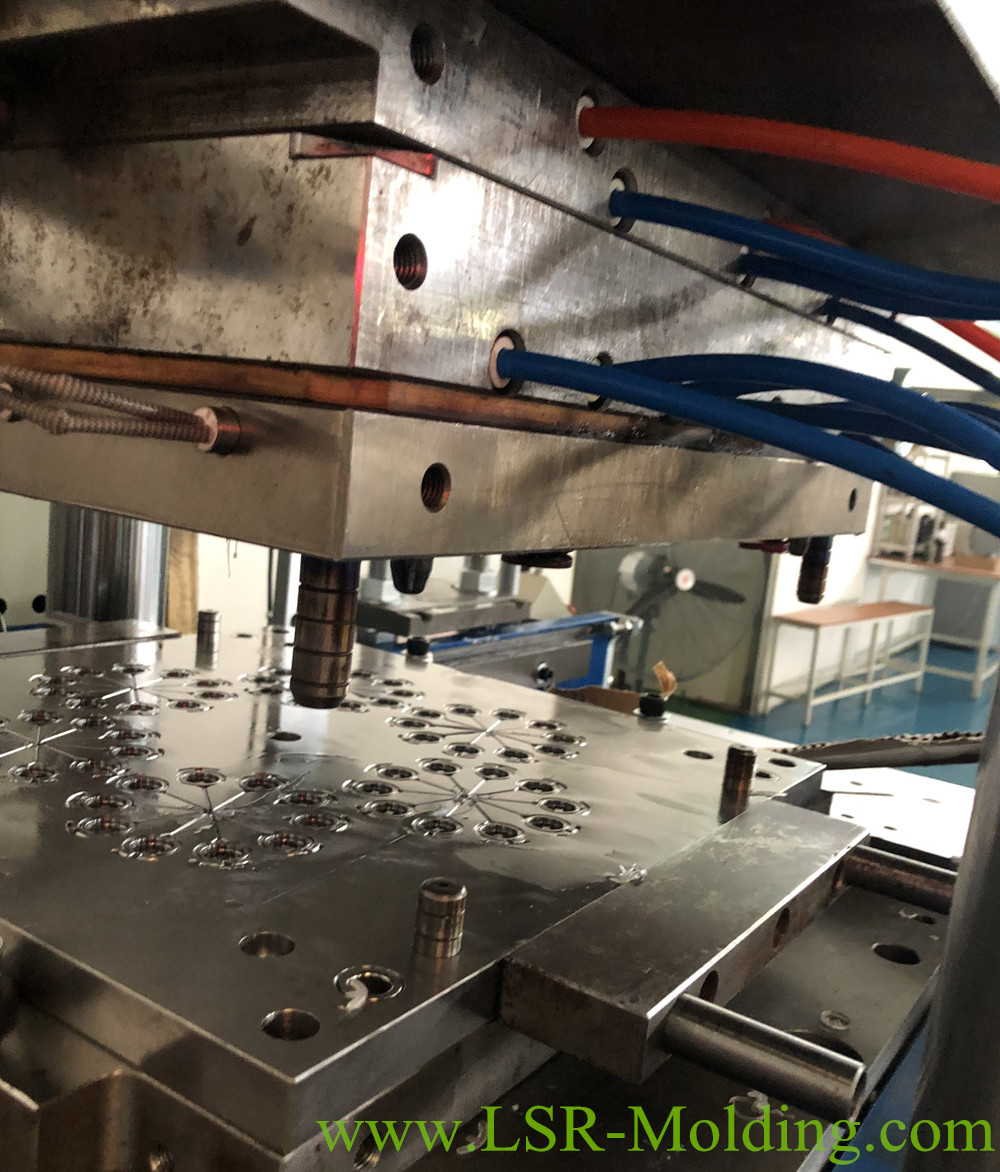Hot Keywords:
- All
- Product Name
- Product Keyword
- Product Model
- Product Summary
- Product Description
- Multi Field Search
Views: 188 Author: Elena Publish Time: 2020-02-07 Origin: www.LSR-molding.com

Rubber Transfer Moulding
Rubber Transfer Moulding, also called transfer mold or transfer mold tool, is a combination of compression moulding and injection mould. Transfer moulding is coverted from traditional compression mould and take transfer injection advantages from liquid injection moulding. Rubber transfer moulding is a three-layer mould plates design. The first plate is called ram which is to force material in the pot to flow to cavities. The second mould plate and third plate combined is like a compression moulding, but a pot is carved on the top plate. The pot is a chamber, separate from cavities to contain raw material.
Reasons of Rubber Transfer Moulded Parts are More Accurate than Compression Molded Parts
Transfer mould clamping pressure is higher than pressure of compression moulding. Higher clamping force has good effect on accurate alignment of each mould plates.
Raw materail container pot is independent from mould cavity.
Compression moulding allows overflow gaps for rubber leftover nearby cavities, but in rubber transfer mould, there are only cavities rooms in plate, and little room is allowed for flash. So the cured rubber parts can be free of flash or with less flash. It can also save a lot of deflashing time.
In transfer moulding process, rubber material is injected to close mold, instead of putting the material to open mould cavity first in compression moulding. Transfer injection assures rubber evenly flow to every chamber and less flash generated. Thus it do benefits to products consistency and stability.
Transfer injection moulding is very good for composite overmolded products production. Metal, glass, plastic, or electronic components are first inseted to cavities. Then rubber is transfered to the close mould. Rubber injection will not push the inserted components and change their location, but rubber flows and wraps these components perfectly.
For some tube shaped rubber products, like rubber bellow or silicone tubing, both compression moulding and transfer injection moulding require a mole core for the bellow parts. In rubber compression mould, raw material direct placement on the core add pressure to cores. It is easy to result in deformation of the small and thin cores, and then further result in mismatch and uneven wall thickness. But by transfer injection moulding, tubing wall thickness consistency is guranteed.
Transfer Moulding Manufacturing Process
One of the big differences is that material is put into cavities directly in compression moulding, while in tranfer moulding, it is placed on the pot and transfered to the cavities.
Compared with rubber transfer moulding, compression moulding is a traditional and simpler mould type. In gerneral, top plate and bottom plate make up one rubber compression mould. Sometime it also includes a middle mold plate ( like rubber grommet mold) or a mold core ( like rubber bellow mould tool). Compression moulding is rather cheap as it simple mould design and can efficiently manufacture a large quantity of simple rubber parts.
| Mould Cost | Labor Cost | Flexibility of Product Design | Accuracy and Stability of Molded Parts | Flash on Product | Automation | |
| Transfer Moulding | Moderate | Moderate | Good | Good | Less | Moderate |
| Compression Moulding | Low | High | Average | Average | Average | Low |
| LSR Injection Moulding | High | Low | Best | Best | Minimum | High |
How Does Rubber Transfer Moulding Work?
Rubber Transfer Moulding process is not really like injection moulding. Pre-measured rubber is placed in the pot first. With pressure, silicone rubber is transfered and injected to mould cavities. In transfering process, material evenly and accurately flow to each chamber, but flashes are left on the pot.
After tranfer moulding, mold opens. Take out the flash on the pot and demould the rubber parts from cavities. Flash in the pot is larger than the waste material generated from rubber compression molding. But flash around transfer moulded parts is extremly little.
Rubber Transfer Moulding Application
Overmolded Parts, like rubber part with metal, glass, plastic, fiber or electronic components. Transfer moulding is widey used in electronic products production, like semiconductor chips, connectors, integrated circuit wraped with silicone rubber.
High-precision rubber gasket and component production, like silicone piston seals.
Small-inner-diameter tube shaped products, like silicone tube, nozzles, rubber bellows, rubber bushing.
Contact Us / Product Inquire / Liquid Injection Molding / LSR Molding / Article Inquire / FAQ / Download / Sign In / Register / Gallery / China Hot Products / Hot Products / Liquid Silicone Rubber Molding / Customized service / Request Quote / LSR Mold Design Guide / Liquid Silicone Rubber / Liquid Silicone Rubber Molding / Food Grade Liquid Silicone Rubber / Medical Grade Liquid Silicone Rubber / LSR Seal / Expo News / Industry News / Liquid Injection Molding - Better Silicone Project News / Silicone Materail Certifications / Silicone Umbrella Valves Drawing